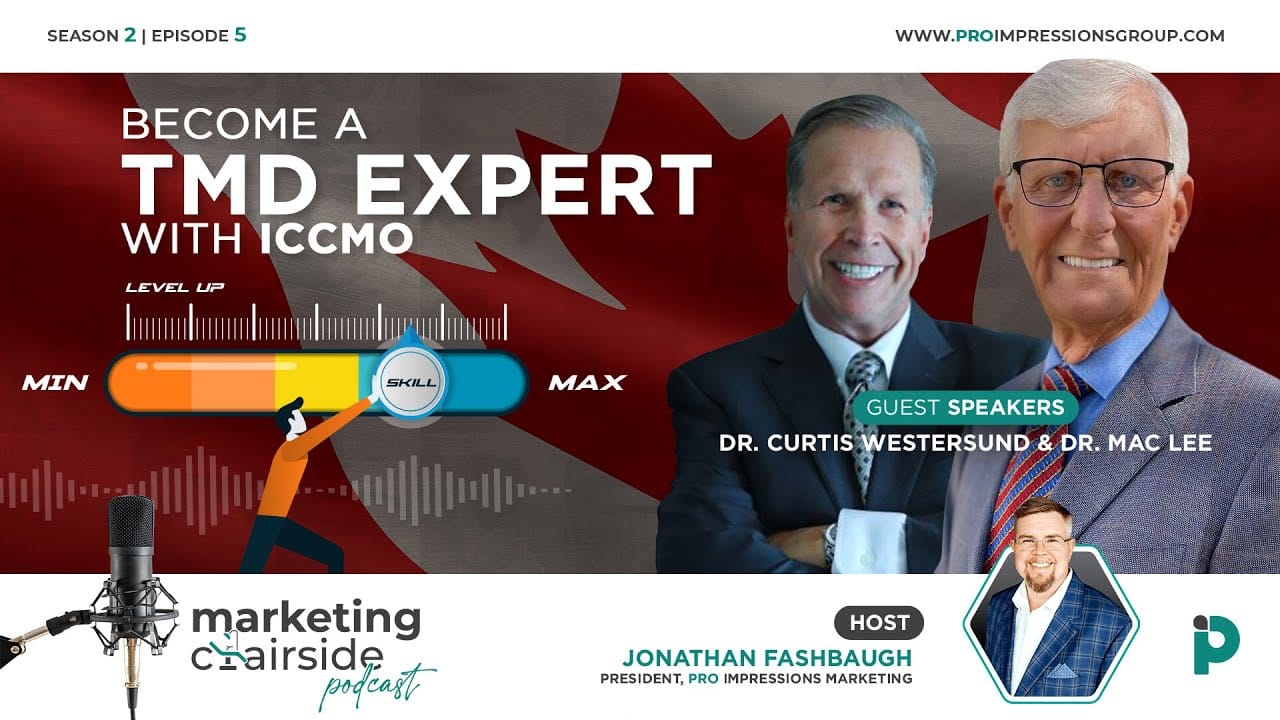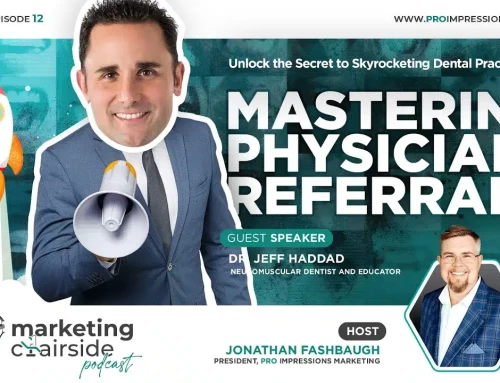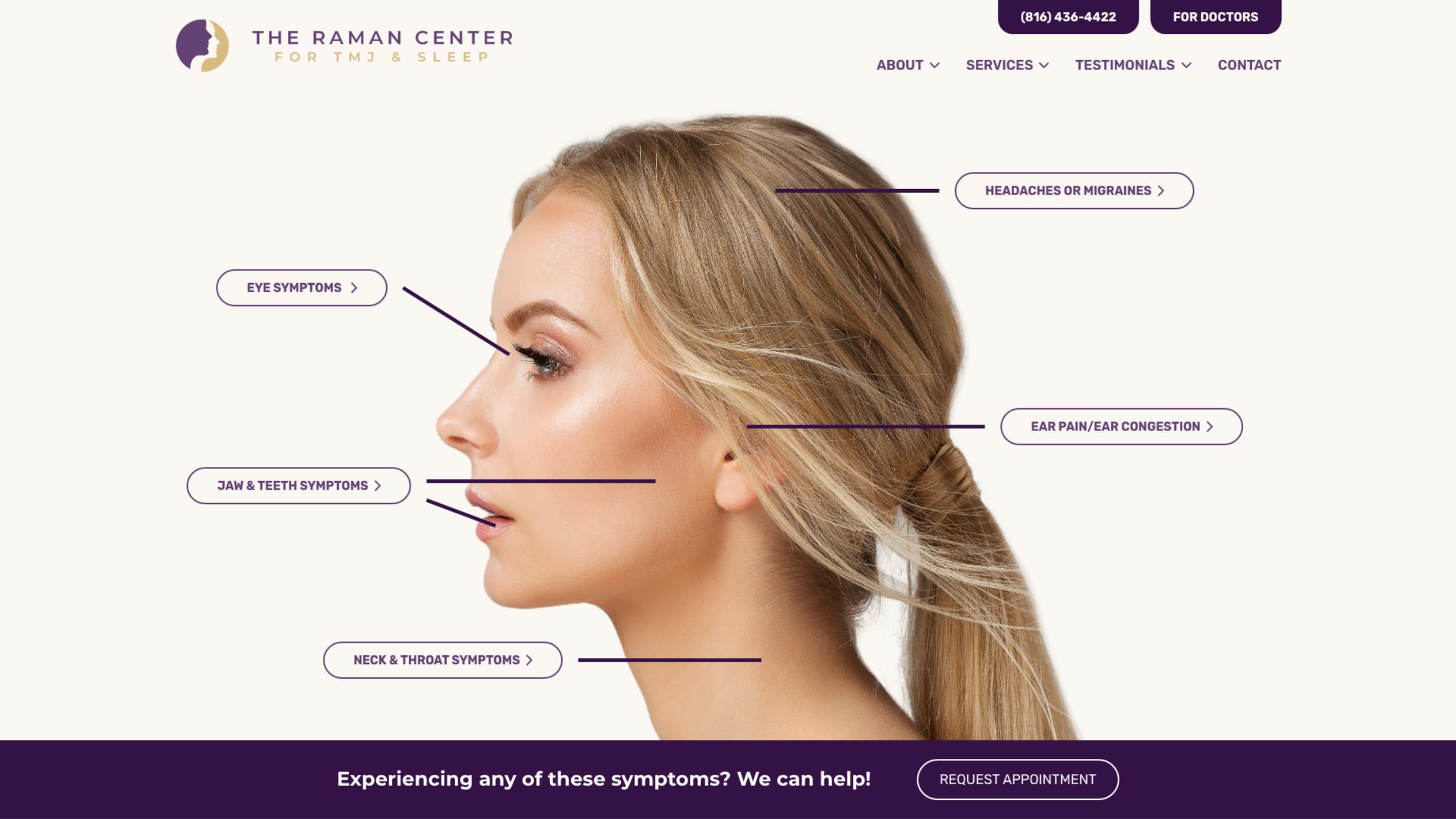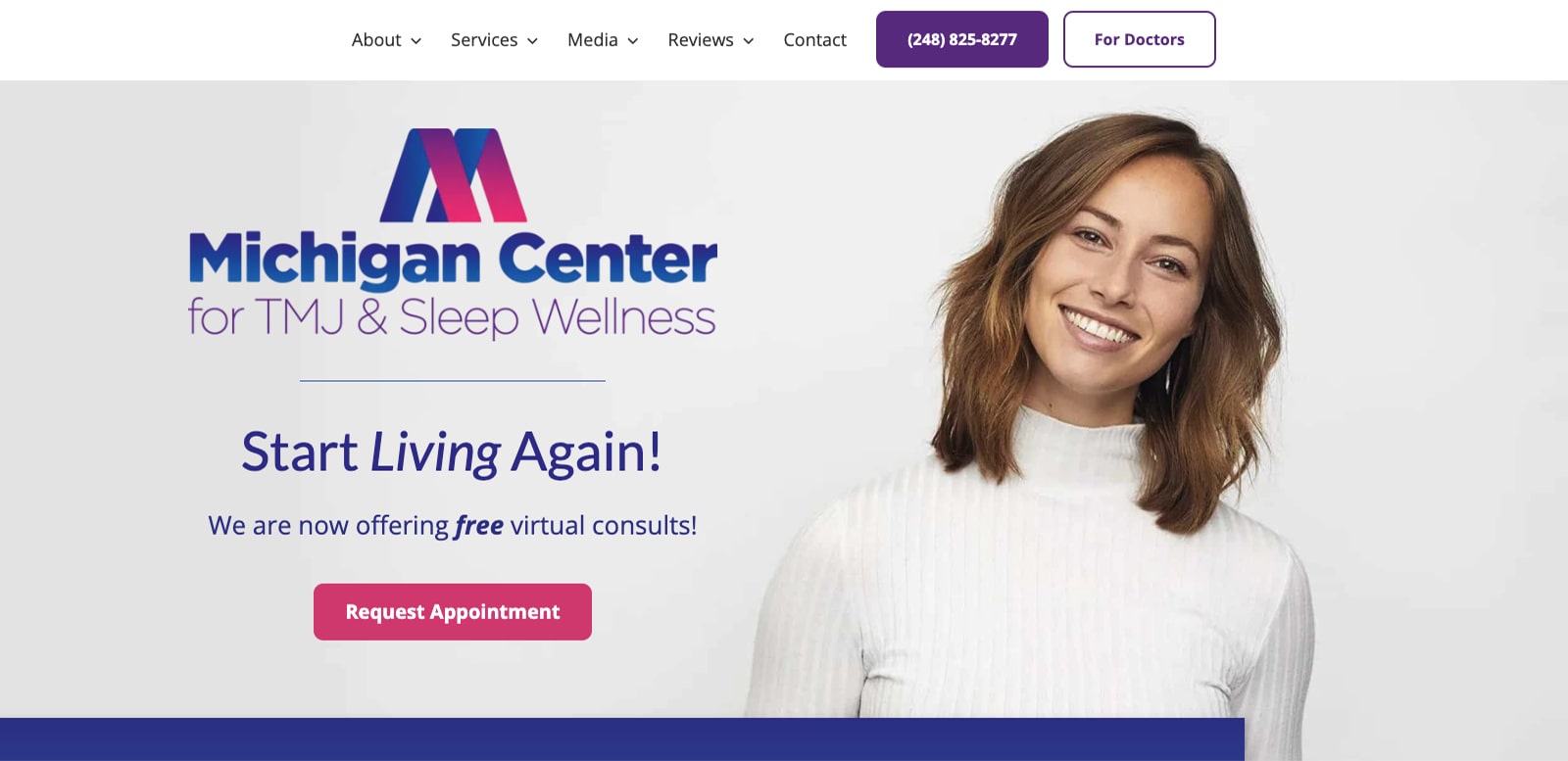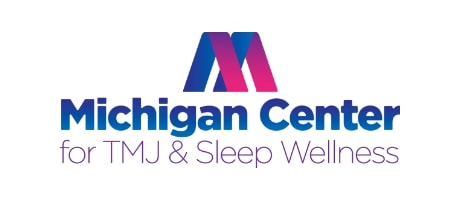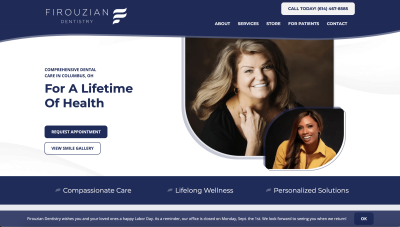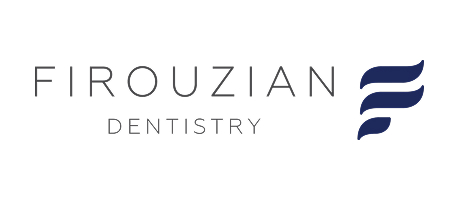The most successful dental practices don’t just advertise services—they showcase expertise that patients can feel confident in. TMD-focused care does exactly that. By combining clinical understanding of jaw function with visible affiliations like ICCMO, you can position your practice as the trusted destination for patients struggling with headaches, bite issues, and chronic discomfort. Our dental marketing firm helps make that connection—turning your clinical credibility into patient confidence and growth.
Why TMD-Focused Care Is A High-Impact Growth Lever
TMD is both a clinical opportunity and a marketing advantage. In most markets, few practices clearly explain jaw pain, bite balance, or why restorations keep chipping—so the practice that does becomes the local go-to.
Our dental TMJ marketing approach help practices highlight that expertise and attract the right patients.
A concise, outcomes-oriented message helps you:
- Differentiate beyond routine hygiene and restorative care.
- Attract motivated patients actively searching for jaw pain relief.
- Increase high-value case acceptance through clarity and trust.
What ICCMO Membership Signals To Prospective Patients
Patients may not know every acronym, but they recognize commitment to education. A brief ICCMO mention shows that your team stays current and applies structured thinking to evaluation and planning.
Use ICCMO as a trust signal by placing it where decision-making happens: a one-line reference above the fold, a sentence on the About page, and a badge near your call-to-action. Keep it patient-friendly and free from jargon so it reassures without distracting.

How Pro Impressions Turns Your TMD Story Into Demand
Our role is to translate your clinical philosophy into a clear, conversion-driven digital journey. We focus on three key outcomes: making TMD easy to understand, ensuring the following steps are clear, and making it effortless to contact your office.
Brand Positioning And Messaging
We begin with a plain-language narrative: what patients experience, what you assess, and the initial conservative steps you recommend. Instead of leading with technical terms, we define them once—“bite balance” as how upper and lower teeth meet comfortably; “jaw joint” as the hinge that opens and closes—then return to everyday phrasing.
Website And Conversion Optimization
Your site should enable visitors to self-identify and take action within seconds. A dedicated service page for TMD, supported by a handful of symptom pages, creates clarity and depth. Pair a short value statement with a single, prominent CTA.
Include a natural internal path to your TMD evaluation, allowing visitors to request an appointment without having to search for the right button.
Local SEO That Captures Symptom Searches
Most queries begin with symptoms, not acronyms. We map your content to the searcher’s language and intent so you appear for both research and ready-to-book terms.
We focus your content cluster around:
- Symptom explainers (jaw clicking, morning headaches, chipped veneers).
- Contributing factors (clenching, posture, airway considerations) stated simply.
- Evaluation overview and follow-up cadence written in patient-friendly terms.
Consistent phrasing across your site and Google Business Profile strengthens relevance and lifts your visibility for TMD-related searches.
Content And Video Patients Actually Watch
Short, helpful assets make complex topics feel approachable. We recommend 60–90 second videos that mirror your page copy and answer the most common questions your front desk hears. Keep production light: a friendly face, steady framing, and captions for silent scrollers. Reference ICCMO briefly, where it reinforces confidence without adding complexity.
Reviews And Social Proof That Reduce Friction
Word of mouth now happens on your profiles. Ask for feedback that highlights areas such as communication, comfort, and clearer sleep or daytime function—without promising specific outcomes. Curate a few representative quotes on your TMD page and link to your broader reviews page so motivated visitors can explore more social proof. All of these tactics help improve your reputation in the eyes of potential patients.
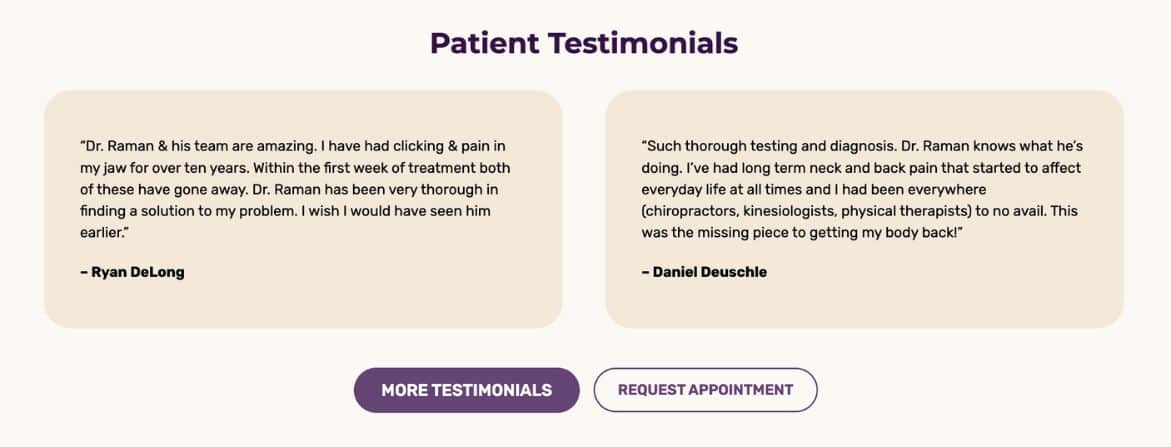
Paid Search And Landing Pages Built For Intent
Paid search targets individuals who are actively seeking to take action. Align each ad group with a specific symptom and direct clicks to a corresponding landing section featuring a concise summary and a clear next step. A single sentence noting ICCMO-informed education near the CTA boosts confidence without derailing the reader.
For those who need more time, a brief email sequence nurtures trust. Topics can include what to expect at a TMD evaluation, simple strategies to reduce daytime jaw tension, and how follow-ups ensure comfort.
Patient-Friendly Language: What To Say And What To Avoid
Patients make decisions when they feel understood and respected. Keep explanations grounded and avoid absolutist language. Define necessary terms once, then use everyday words as defaults. Replace “occlusion analysis” with “how your teeth meet,” and “muscle dysfunction” with “tired, overworked jaw muscles.” The aim is to lower anxiety and raise comprehension—both key to conversions.
The TMD Content Cluster That Drives Qualified Traffic
Organize content so that a visitor can quickly see, “This is me,” “This is what happens,” and “This is how to start.”
Symptoms And Everyday Signs
Open with common experiences—jaw clicking, morning headaches, chipped restorations that never seem to last, neck or shoulder tightness that worsens with clenching. Invite an evaluation rather than implying a diagnosis online.
Contributing Factors Explained Simply
Connect symptoms to relatable causes: bite imbalance, nighttime clenching, posture patterns, and airway considerations. These explanations motivate action without overwhelming readers.
Diagnosis And The First Visit
Outline your approach: a conversation about symptoms, a look at how the teeth meet, gentle movement checks, and simple photos or measurements to track comfort over time. This transparency reassures anxious readers and reduces reluctance to call.
Treatment Pathways And Follow-Up
Emphasize conservative, personalized planning—often starting with a bite appliance when appropriate and coaching for daytime habits. Explain that check-ins confirm comfort and guide minor refinements. If collaboration is needed, let patients know you coordinate those steps for them.
When visitors are ready, they should find an easy path to your team on the contact page for scheduling and any questions they may have.
Where ICCMO Belongs On Your Site
A few well-placed mentions perform better than a wall of logos. On your TMD page, include a single sentence noting that your evaluation and planning are informed by ongoing education through ICCMO. In your bio, mention how that learning influences your communication style and stepwise care. This approach keeps attention on the patient journey while conveying credibility.
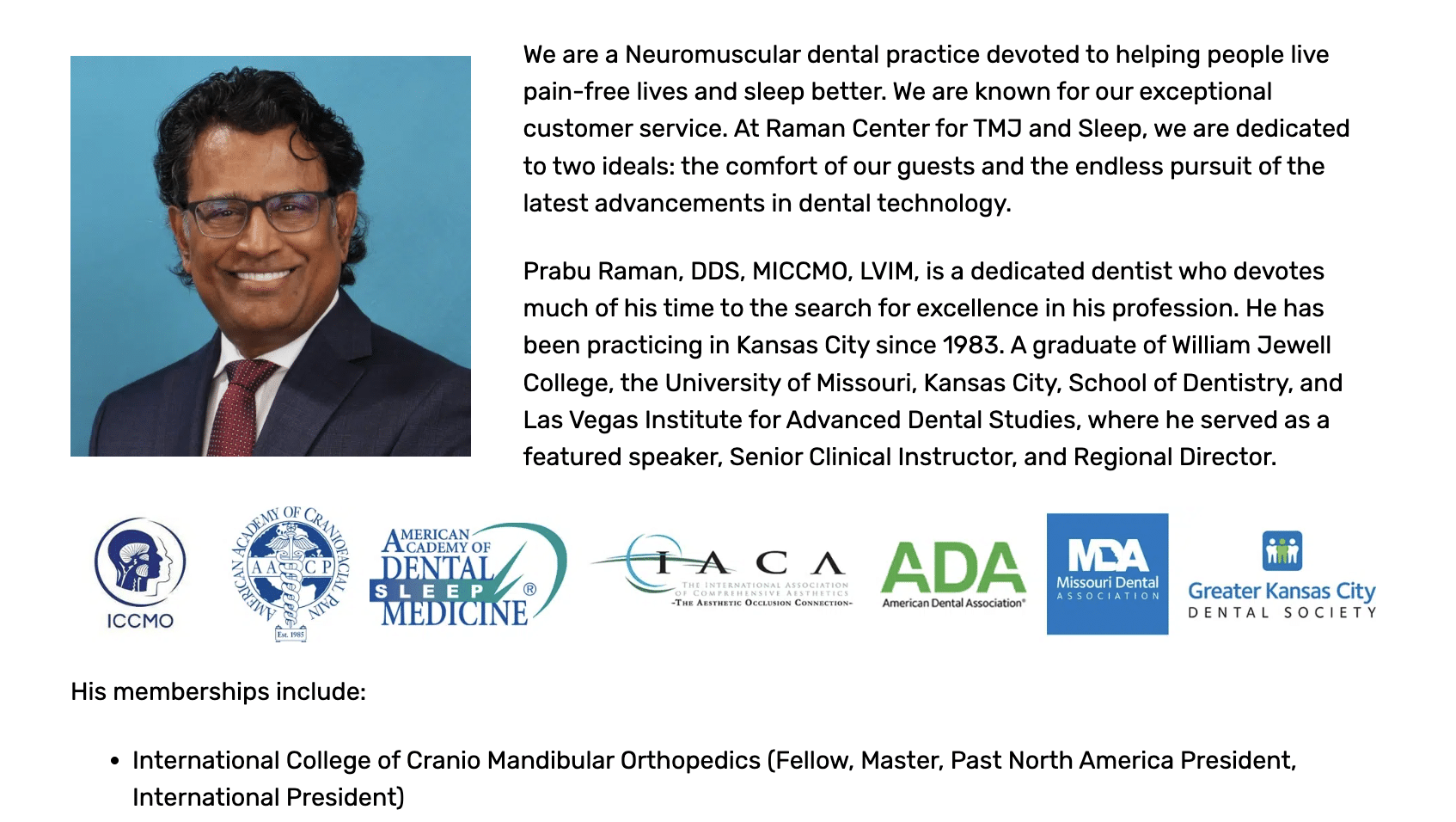
The 90-Day Launch Plan (Built For Busy Teams)
Momentum comes from sequencing. We deploy in three sprints, so you can execute without disrupting your day-to-day operations.
Days 1–30: Foundation
Clarify messaging, ship your TMD page and three symptom pages, refresh your Google Business Profile, and configure call/form tracking. Draft a one-page “What to Expect at Your TMD Evaluation” handout that mirrors site language.
Days 31–60: Traffic & Trust
Publish four short blogs and two brief videos based on front-desk FAQs. Launch search ads for symptom queries mapped to your new pages. Invite fresh reviews that mention comfort, clarity, and communication.
Days 61–90: Scale & Refine
Add an FAQ section and one consented case story. Tighten your forms and test CTA placement and wording. Expand your keyword set where performance is strongest and adjust bids accordingly.
What We Measure (And What You’ll Actually Use)
We report on metrics that track to business outcomes, not vanity.
- Engagement on TMD pages (time, scroll depth, CTA interactions).
- Calls and forms originating from TMD content and ads.
- Google Business Profile actions tied to jaw-pain queries.
- Cost per lead, scheduled evaluations, and show rates.
These numbers tell us where to invest, what to simplify, and how to increase booked evaluations month over month.
Equipping Your Team For Consistency
Conversion depends on your systems matching your message. Provide your staff with:
- A short phone prompt for TMD inquiries that sets expectations.
- A pre-visit email that repeats “what happens first” and parking or check-in details.
- A simple photo protocol so progress feels visible and explainable chairside.
These touches reduce patient anxiety, cut no-shows, and maintain your brand’s voice consistency from search to chair.
FAQs
The Bottom Line For Practices
Clear, patient-friendly messaging, combined with a few well-placed ICCMO signals, creates a powerful market position. You’ll help people recognize their symptoms, understand your process, and feel comfortable requesting an evaluation. Voices like Dr. Westersund, Dr. Lee, and Dr. Marzban demonstrate that education and empathy can coexist—and when your marketing reflects both, trust (and case acceptance) follow.
